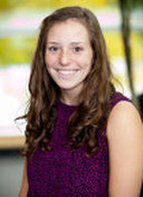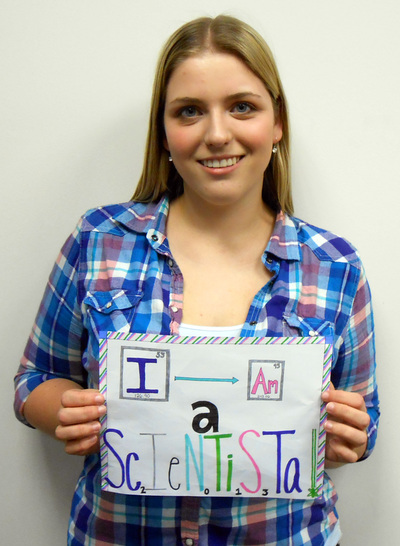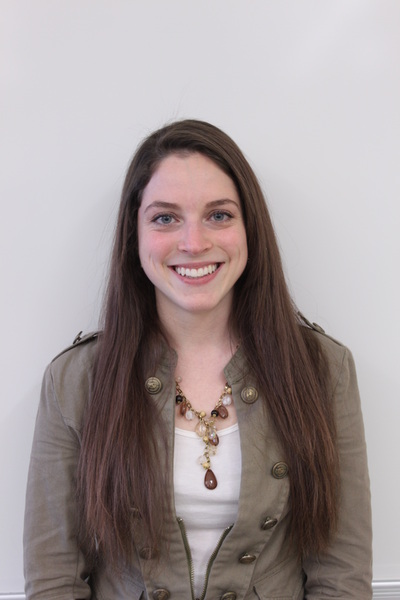|
3/15/2015 0 Comments Science Discoveries: Newly Discovered Sea Creature Was Once the Largest Animal on Earth "Almost half a billion years ago, the largest animal on Earth was a 2-meter-long, helmet-headed sea creature that fed on some of the ocean’s tiniest prey. The newly described species is one of the largest arthropods yet discovered, a class of animals that includes spiders and crabs." Scientists have recently uncovered a new species of arthropods from 480-million-year-old rock found in Morocco. At one point, scientists say that this water creature was the largest animal to exist on the planet, measuring up to two meters long. The species has been named Aegirocassis benmoulae; Aegir meaning God of the sea in Norse mythology, cassis stemming from the Latin word for helmet, and benmoulae recognizing the Moroccan collector who first stumbled upon the fossils. This pivotal discovery now allows scientists to fill in previous gaps regarding arthropod evolution and draw many conclusions, such as the development of arthropod limbs. Author: Sid Perkins Source: AAAS.org Link to the Full Article: http://news.sciencemag.org/biology/2015/03/newly-discovered-sea-creature-was-once-largest-animal-earth -Amelia Ekert Loyola University Maryland Scientista Website Coordinator  Huge New Holes In Siberia Have Scientists Calling For Urgent Investigation Of The Mysterious Craters "Scientists were baffled last July when they discovered three giant holes in the ground in Yamal Peninsula in northern Siberia. Now, with the help of satellite imagery, researchers have located ffour additional craters--and they believe there may be dozens more in the region." Through the use of satellite technology, scientists have recently uncovered three craters in the ground in the Yamal Peninsula in Siberia. Scientists are left wondering why and how these massive holes have formed and how they can predict if more will appear in the future. It is believed that the holes are the result of gas explosions prompted by a buildup of underground heat or the continual change in the Earth's climate. A crew has been sent out to study and photograph the holes and begin to unravel this mystery. Because gas explosions underneath the surface of the earth are unpredictable and dangerous, it is difficult for them to be studied. As a solution, scientists plan on setting up stations in the surrounding area to detect and track earthquakes that may follow as a result of the explosions. Author: Marcina Cooper-White Source: Huffington Post Link: http://www.huffingtonpost.com/2015/02/23/holes-siberia-investigation-safety_n_6736744.html?utm_hp_ref=science -Amelia Ekert Loyola University Maryland Scientista Website Publishing Chair "In the closing sentence of “The Origin of Species,” Charles Darwin marvels at the process of evolution, observing how “from so simple a beginning endless forms most beautiful and most wonderful have been, and are being, evolved.” Few people would describe bedbugs as most beautiful or most wonderful. Yet this blood-feeding pest may represent an exceptional chance to observe the emergence of Darwin’s “endless forms”: New research indicates that some bedbugs are well on their way to becoming a new species."
This article gives readers a look into the evolution of bedbugs, from where they originated to their present residing and how they made the journey in between. Through the DNA of bedbugs, scientists have been able to track the movement of these bugs around the world and begin to figure out why we just can't seem to get rid of these pests altogether. Author: Carl Zimmer Source: New York Times Link: http://www.nytimes.com/2015/02/05/science/in-bedbugs-scientists-see-a-model-of-evolution.html?ref=science&_r=0 -Amelia Ekert Loyola University Maryland Scientista Website Publishing Chair  "On a Saturday morning [in] September [2014], the world got its first look at the Strati. This electric vehicle is unlike any other currently on the road. It rolls on four wheels, but its body and chassis weren't built in a factory. Instead, Strati's designers used a technology called 3-D printing." Scientists have long been working on the development of 3-D printers and now they are finally here! Last year, at the International Manufacturing Technology Show in Chicago, the world's first drivable car was printed from a 3-D printer. The vehicle was printed in under 48 hours and, after a few parts were added to it, was driving on the street. The car was named "Strati" from the Italian word strati, meaning layers because the vehicle was essentially built "slice by slice, from the bottom up." Scientists and manufacturing experts believe that 3-D printing will transform the way things are made and, over time, may be available to anyone at any time. Source: Student Science Author: Stephen Ornes Full Article Link: https://student.societyforscience.org/article/3-d-printers-are-making-cars?mode=topic&context=104 "You don’t need a Ph.D. to be in Congress. But some advocates for the sciences believe not enough lawmakers have them."
This article discusses the recent retirement of Rep. Rush Holt (D., N.J.) from Congress and the continuing lack of representation of the "natural sciences" from members in legislature. Holt was one of three members who held a doctorate degree in an area of the hard sciences, out of 535 senators and representatives. Now, only two members with advanced degrees are left who can push for support in the sciences. This lack of representation in Congress is a growing concern for associations who rely on the support and funds pushed for by members of Congress. Source: Wall Street Journal: Politics and Policy Author: Heather Haddon http://www.wsj.com/articles/science-advocates-decry-lack-of-representation-in-congress-1420503822 - Amelia Ekert Loyola Scientista Chapter Website Publishing Chair 12/10/2014 0 Comments Charity Challenge ExperienceOn November 15th 2014, the Loyola University Maryland Scientistas volunteered at the Health Care for the Homeless 5k.
Our chapter decided to support Health Care for the Homeless as our charity for the Scientista Charity Challenge because of its efforts to help the community in which we live. "Health Care for the Homeless (HCH) works to prevent and end homelessness for vulnerable individuals and families by providing quality, integrated health care and promoting access to affordable housing and sustainable incomes through direct service, advocacy, and community engagement ... With strong public and private support, HCH is guided by a vision of a future without homelessness in which all Marylanders have access to comprehensive health care, affordable housing, and livable incomes." At the 5k we directed runners throughout the course as they ran to raise money for Health Care for the Homeless (HCH). However, we wanted to support HCH in other ways as well. In order to further support HCH’s goal, we decided to raise money for them while also participating in their shoe drive to collect shoes that would help protect their clients’ feet during the winter. We were able to donate multiple pairs of shoes, which were brought with us to the 5k. Through bake sales and the help of generous donors, our fundraiser went extremely well. We were able to raise over $300 for HCH on our gofundme.com fundraising page. http://www.gofundme.com/LUMscientistas - Anna Bellerive Loyola Scientista Chapter Co-Director  For The Scientista Foundation "Charity Challenge" the Loyola Chapter voted on a cause to support earlier this month. We will be fundraising for Healthcare for the Homeless! We encourage members to contribute ideas and time to our efforts in this challenge. Our first fundraiser will be a Scientista Bake Sale in November, where we will be selling festive treats and cider! If you are interested in donating baked goods please contact Co-Director Anna Bellerive (arbellerive@loyola.edu). Anna is working on coordinating an event that will involve donating our time as well to Healthcare for the Homeless. If you are interested in playing a bigger role in our Charity Challenge by joining the fundraising committee please contact Co-Events Chair Ashley Geczik (amgeczik@loyola.edu). 3/30/2013 0 Comments Loyola Scientista Spotlight!Meet Alyssa Compeau, a Second Year Masters Student at Loyola University Maryland Alyssa has recently completed data collection for her Masters thesis entitled, The Effects of Engaging in Fat Talk on Body Dissatisfaction, Self-Esteem, Mood, Eating Behavior, and Interpersonal Closeness. She has graciously agreed to share her experiences with us as a graduate student and researcher. 2/25/2013 0 Comments Loyola Scientista Spotlight!Meet Kelly Maluccio, a Math major and Division 1 Athlete at Loyola University Maryland  Read about her volunteer work with Loyola's Women in Sports Day! Tell us a little bit about Loyola’s Women in Sports Day. How did you get involved? I have volunteered at Loyola’s Women in Sports Day for the past four years. I am on the varsity women’s swimming and diving team here at Loyola, so I volunteer every year with my entire team and we have a blast with all of the young female athletes. Tons of girls come to Loyola and we get to give them a tour of the athletic locker rooms as well as get them pumped for the basketball game later that afternoon. In previous years, I have given tours and talked with the girls about what sports they play and how much fun it is to play a sport in college. This year I was able to work at a few different tables helping with poster making, face painting, tattoos, and hair ribbons. The girls get so excited to get a Loyola tattoo or sparkly green hair ribbon to wear to the game. Also, they decorate and create posters that say ‘Loyola’ or ‘Go Hounds!’ because they can bring these posters to hold up at the game. It is always a fun experience to talk with the young athletes and encourage them to keep it up. |
Welcome, LUM Scientistas!The Loyola Scientista chapter is dedicated to providing every Loyola scientista with campus-related advice, news, articles, features and more. Browse through our website and join our mailing list to gain access to great resources and events!
CategoriesAll Meet The Team Opportunities Scientista Spotlight LUM Scientista PicsWhat's NewUpcoming EventsNew National ArticlesSubscribe To Our Mailing ListArchives
March 2015
|
The Scientista Foundation, Inc. All Rights Reserved © 2011-2021 | Based in NY | contact@scientistafoundation.org
The Network for Pre-Professional Women in Science and Engineering
The Scientista Foundation is a registered 501(c)(3) -- Donate!
The Network for Pre-Professional Women in Science and Engineering
The Scientista Foundation is a registered 501(c)(3) -- Donate!










 RSS Feed
RSS Feed